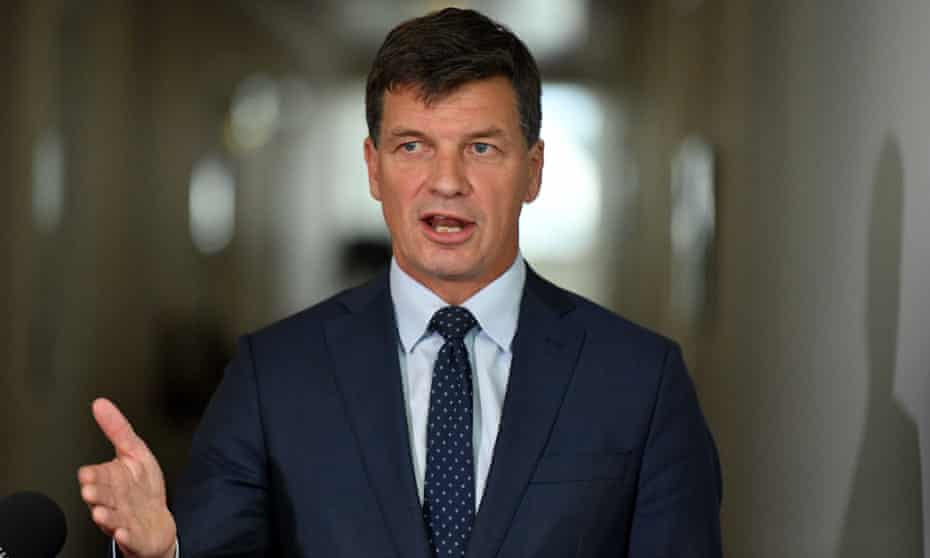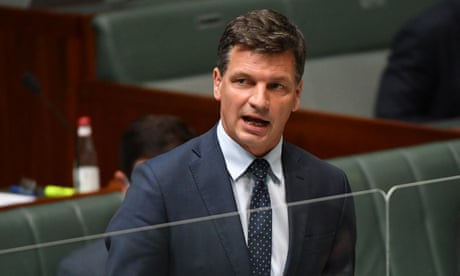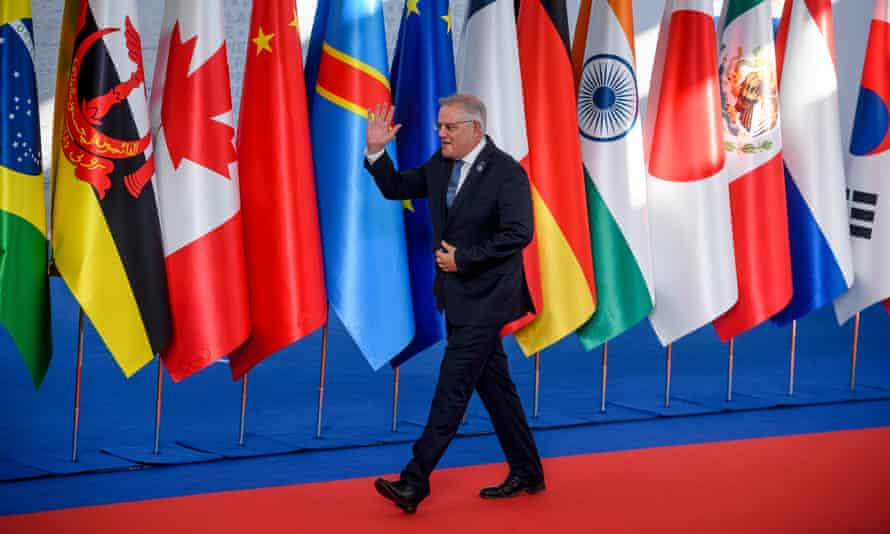Extract from The Guardian
Energy minister refuses to detail full cost of reaching 2050 target as Cop26 summit looms.

Energy minister Angus Taylor says future governments will allocate funding beyond 2030 ‘as they see fit’ to meet the net zero target.
Last modified on Sun 31 Oct 2021 17.22 AEDT
The Coalition’s “technology not taxes” plan for net zero emissions by 2050 could cost taxpayers much more than the $20bn allocated by the Morrison government.
The emissions reduction minister, Angus Taylor, told ABC’s Insiders on Sunday that more will need to be spent beyond 2030 to reach the target.
He confirmed the “run rate of the money we are spending over the next decade is what we would expect into the future”, as further spending on research, development and carbon credits would probably be needed.

The comments come as Scott Morrison defended Australia’s opposition to language in a draft G20 communique committing nations to “phase out and rationalise” fossil fuel subsidies by 2025 and to curb coal power.
As the G20 summit moves into its final day, some countries are seeking strong language around combating the threat of global heating in the final communique of the Rome summit as a positive harbinger for the Cop26 in Glasgow.
The United Nations-led climate summit begins in Scotland on Monday. The British prime minister Boris Johnson, who is the host of the gathering, has urged leaders to come to Glasgow with serious commitments.
On the eve of the summit, Johnson warned that a failure to act could prompt “very difficult geopolitical events”, including mass migration and global competition for food and water.
According to an early draft copy of the G20 communique obtained by the Reuters news agency, leaders were working towards a statement at the conclusion of the summit that will reaffirm a commitment to “phase out and rationalise” fossil fuel subsidies by 2025 and to curb coal power.
The draft communique said leaders will “do their utmost” to avoid building new unabated coal plants. But it adds the phrase “taking national circumstances into account”.

It also characterised achieving carbon neutrality by 2050 as an issue of “key relevance”.
Morrison signalled on his arrival in Rome that Australia would have a significant problem with communique language hastening the demise of the coal industry. China and India are also among the countries said to be opposed.
Without engaging on the detail, which he said was “being worked through by the sherpas”, Morrison declared individual countries were entitled to pursue their own interests.
“There is quite a large group of nations that hold similar concerns about this and we will see where this lands in the next few days,” Morrison told reporters.

Scott Morrison has met with world leaders at the G20 summit in Rome ahead of the Cop26 conference in Glasgow, where Australia’s climate commitments will be in the spotlight. Photograph: Antonio Masiello/Getty Images
Asked whether the G20 communique should state that achieving net zero emissions by 2050 should be a common aspiration, Morrison said: “We’ll speak for ourselves.”
Morrison said Johnson had welcomed Australia’s commitment to net zero emissions, and he said Australia’s technology driven approach to emissions reduction was gaining traction, particularly in developing countries.
Taylor won’t detail full cost of net zero plan
Taylor said that “the whole purpose of the plan is to avoid imposing costs on Australians” by spending $20bn by 2030 on technologies including clean hydrogen, low-emissions steel and aluminium, soil carbon and carbon capture and storage.
Asked for the full cost to 2050, Taylor said that “future governments will allocate as they see fit into the 2030s and 2040s” but the government expects that the same “run rate” of spending is “what we would expect into the future”.
Taylor confirmed the plan includes an extra $2bn to be spent on carbon offsets through the rebadged emissions reduction fund, citing the “potential for high-integrity offsets with our neighbours in the Pacific”.
He said there was “absolutely no plan” to change Australia’s 2030 target, as voters had endorsed the 26-28% reduction at the last election.
Officials say Morrison will use Cop26 to pursue new measures ensuring that developing nations have the opportunity to reduce their emissions through technology.
Meanwhile, acting prime minister, Barnaby Joyce, confirmed elements of the Nationals net zero deal including: counting carbon credits as farm income for improved tax treatment; a regional future fund of unknown size; and excluding scope three emissions from the target.
Joyce told Sky News scope three emissions – which could count coal burned overseas to the Australian target – were “basically double counting”.
He said the future fund was intended to create a “parallel income that is growing” as thermal coal exports are “toning down or fading off”, ensuring “people … can go from one mining job to another mining job”.
Morrison has signed Australia up to a net zero target, and that commitment will be expressed in the current nationally determined contribution under the Paris agreement. But the focus of the Glasgow summit is ambition in the short and medium term, with a number of countries upgrading their 2030 targets.
Under pressure from the UK and the US, the prime minister explored upgrading the Abbott-era 2030 target, but the Nationals vetoed that proposition. Morrison has ruled out taking a new 2030 target to voters at the next federal election.
No comments:
Post a Comment